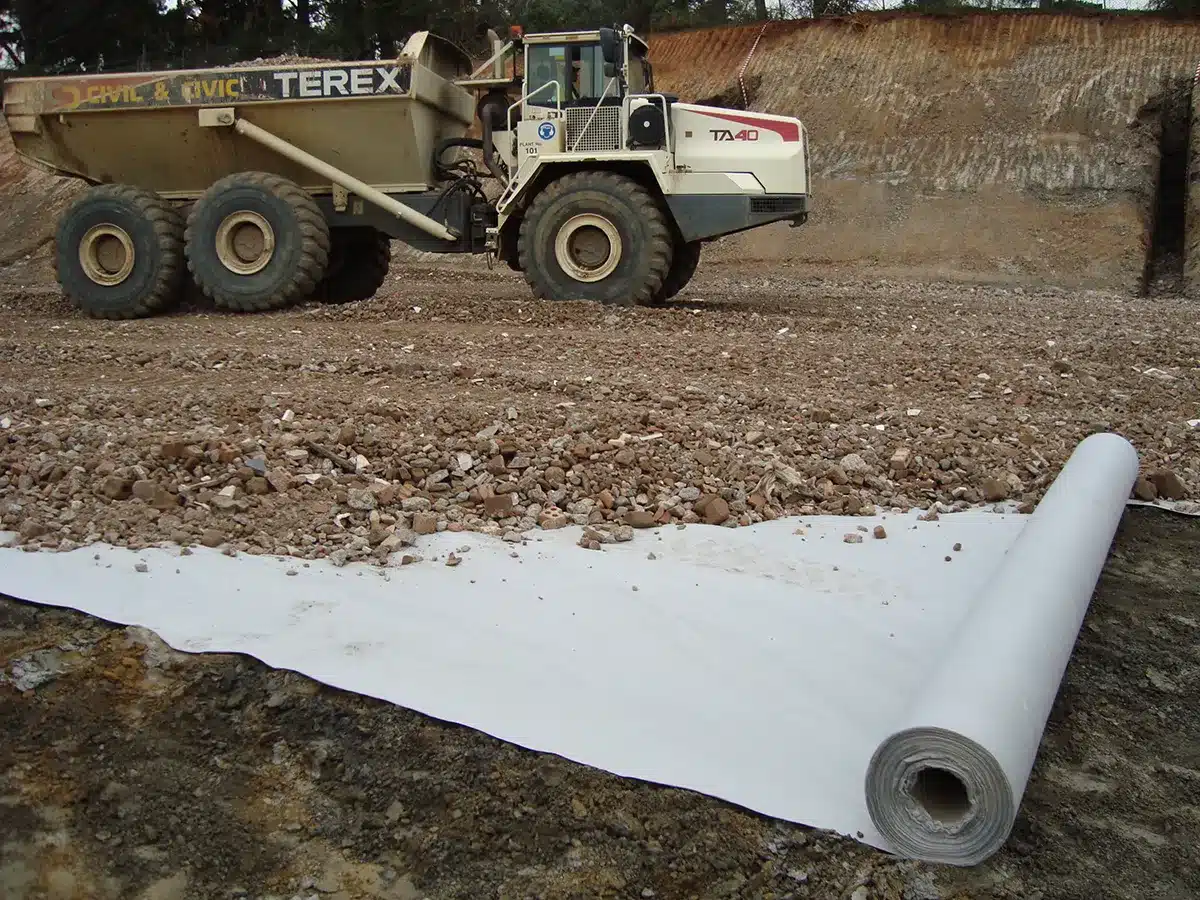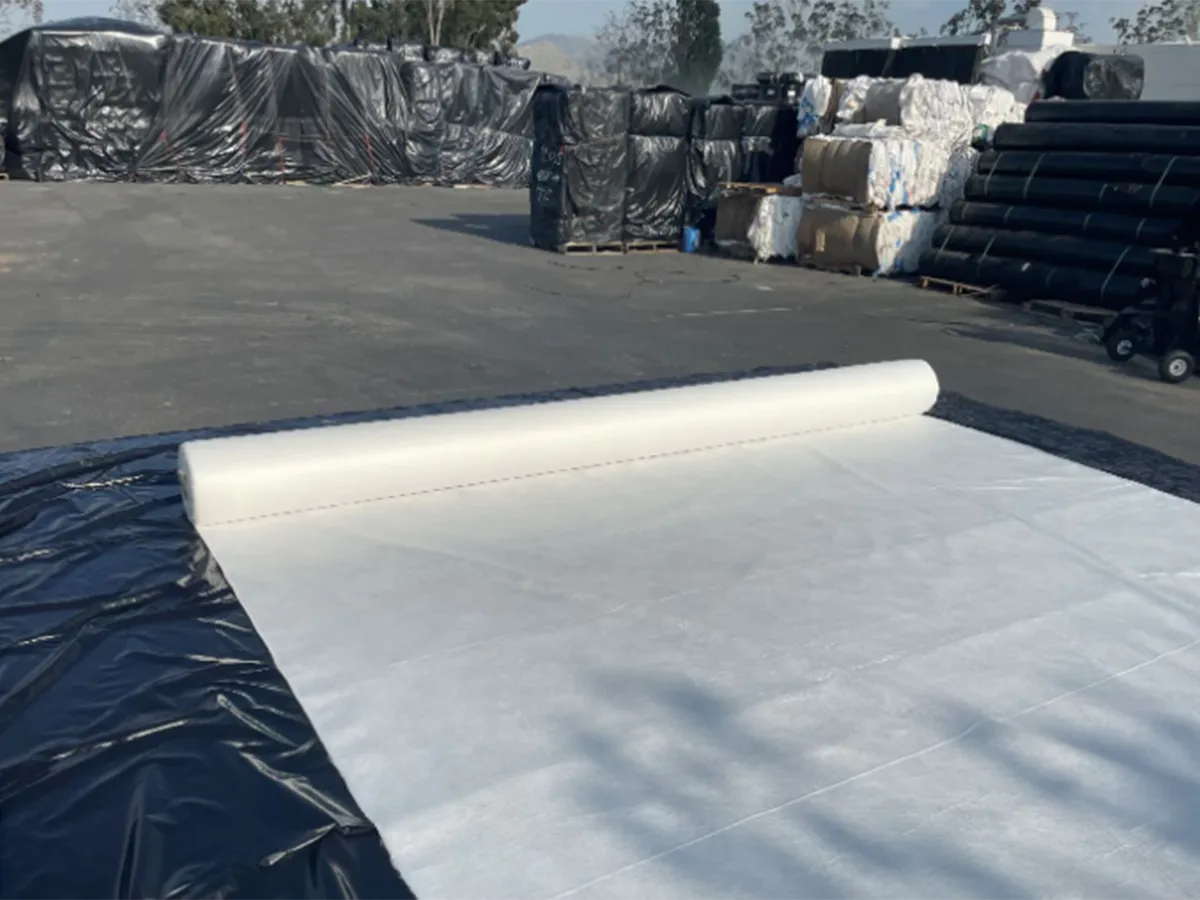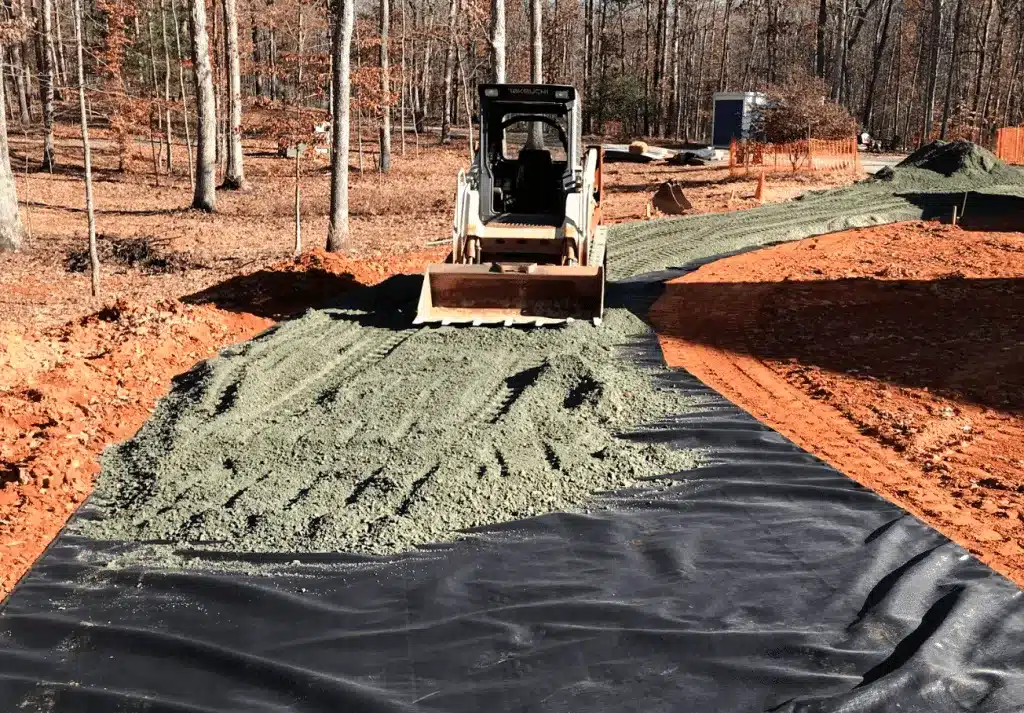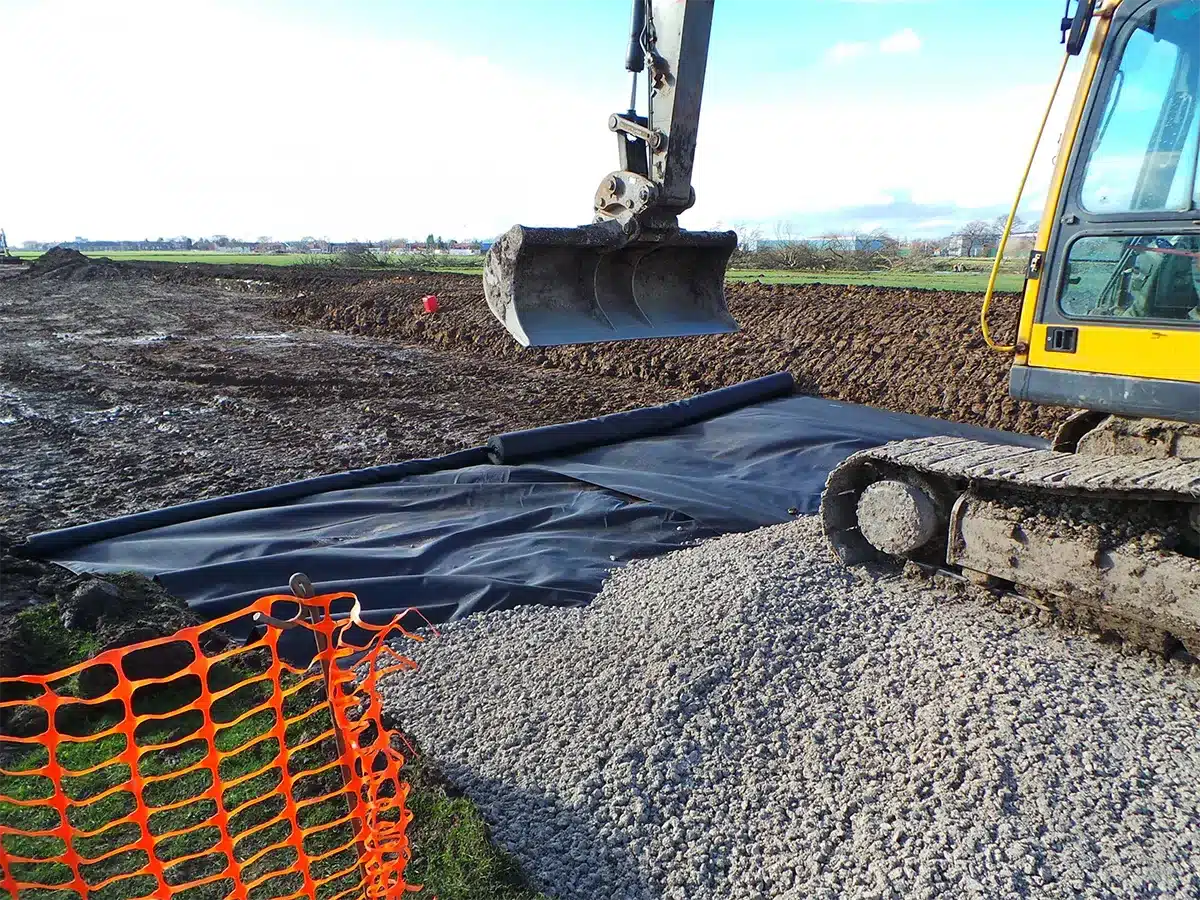+86-159 9860 6917
info@geofantex.com
geofantex@gmail.com
+86-400-8266163-44899
Geotextile fabric installation is a pivotal step in fortifying construction projects with stability and longevity. The process of installing geotextile fabric involves meticulous planning and execution. From preparing the surface to securing the fabric and covering it with the intended materials, each step plays a crucial role in ensuring a resilient and enduring foundation. Properly laid geotextile fabric acts as a robust barrier, preventing soil erosion, enhancing drainage, and providing structural support. This step-by-step guide simplifies the intricate process, offering insights into achieving optimal results while harnessing the full potential of geotextile fabric in construction endeavors.

How to install geotextile fabric?
Installing geotextile fabric involves several key steps:
- Surface Preparation: Clear the area of debris, rocks, and any uneven surfaces. Smooth out the ground to ensure a flat base for the fabric.
- Measure and Cut: Measure the area to be covered and cut the geotextile fabric accordingly, leaving some excess around the edges for proper coverage and securing.
- Lay the Fabric: Unroll the geotextile fabric over the prepared area, ensuring it lays flat and covers the entire surface without any wrinkles or folds.
- Secure Edges: Secure the edges of the fabric using staples, pins, or other suitable fasteners to prevent shifting or movement during subsequent construction.
- Overlap Seams (if necessary): If multiple pieces of fabric are required, overlap the seams by a few inches and secure them firmly to maintain a continuous barrier.
- Cover with Material: Once the fabric is securely in place, cover it with the intended material, whether it’s soil, gravel, or other landscaping materials.
- Compact and Finish: After covering, compact the materials atop the fabric to ensure a stable and even surface. Finish the installation according to the specific project requirements.
How do you install geotextile fabric on a driveway?
Installing geotextile fabric on a driveway follows a similar process:
- Prepare the Surface: Clean the driveway surface, remove any debris, and ensure it’s level and compacted.
- Measure and Cut the Fabric: Measure the driveway area and cut the geotextile fabric to fit, allowing for a slight overlap along the edges.
- Lay the Fabric: Unroll the geotextile fabric over the driveway, smoothing it out to cover the entire surface.
- Secure the Fabric: Secure the edges and seams of the fabric using appropriate fasteners to prevent shifting.
- Cover with Gravel or Asphalt: Apply the desired material over the fabric layer, whether it’s gravel for a permeable driveway or asphalt for a solid surface.
- Compact and Finish: Compact the material to ensure a stable and even driveway surface, following standard construction practices.

Do I need geotextile under gravel?
Using geotextile fabric under gravel can be highly beneficial depending on your project needs. Below is a breakdown of its advantages, situations where it may not be required, and best practices for installation:
Benefits of Using Geotextile Fabric:
- Weed Prevention: Acts as a barrier to prevent weeds from growing through the gravel, reducing maintenance needs.
- Improved Drainage: Facilitates water movement while preventing soil from clogging gravel layers.
- Enhanced Soil Stability: Prevents the mixing of gravel and soil, maintaining the integrity of your surface over time.
- Erosion Control: Protects soil from erosion, particularly on slopes or areas with heavy foot or vehicle traffic.
- Extended Lifespan: Increases the longevity of the gravel surface by reducing subsidence and uneven settling.
When Geotextile May Not Be Necessary:
- Short-Term Use: For temporary pathways or projects where durability isn’t a primary concern.
- Minimal Traffic: In areas with very light use or where natural soil stability is sufficient.
- Budget Constraints: If the cost of geotextile outweighs its benefits for a low-impact project.
- Excellent Existing Drainage: In naturally well-draining soils that are not prone to mixing with gravel.
Recommended Practices for Installation:
- Surface Preparation: Clear the area of debris, vegetation, and large rocks. Smooth the surface for uniformity.
- Fabric Placement: Lay the geotextile fabric flat across the prepared area, ensuring it overlaps by at least 6 inches at seams.
- Anchoring: Secure the edges with landscape staples or pins to prevent shifting during installation.
- Gravel Application: Spread the gravel evenly over the fabric, ensuring adequate coverage to protect the material from UV exposure.
- Edge Protection: Use edging materials to secure the gravel layer and prevent washout or migration.
Using geotextile fabric under gravel is generally recommended for long-lasting, low-maintenance installations. It adds value in areas with poor drainage, high traffic, or erosion risks. However, it may be optional for simpler, low-impact projects with stable soil.
Does water drain through geotextile?
Yes, water can drain through geotextile fabrics, but the extent to which this occurs depends on the type of geotextile being used.
Non-Woven Geotextiles: These are designed to allow water to pass through while filtering out fine particles. Their porous structure makes them ideal for drainage applications, such as beneath retaining walls or in French drains.
Woven Geotextiles: While these are also permeable, their water drainage capability is generally lower than non-woven types. Woven geotextiles are primarily used for soil stabilization rather than drainage.
Key Features of Geotextiles in Water Drainage:
- Permeability: The fabric allows water to pass while preventing soil or sediment from clogging the system.
- Filtration: Acts as a barrier to soil particles, ensuring clean water flow in drainage systems.
- Durability: Resistant to UV, chemicals, and environmental factors, making them long-lasting in wet conditions.
In summary, water does drain through geotextile fabrics, but the type of geotextile chosen should match the drainage needs of your project.



Get Free Sample
We’ll respond as soon as possible(within 12 hours)






















